

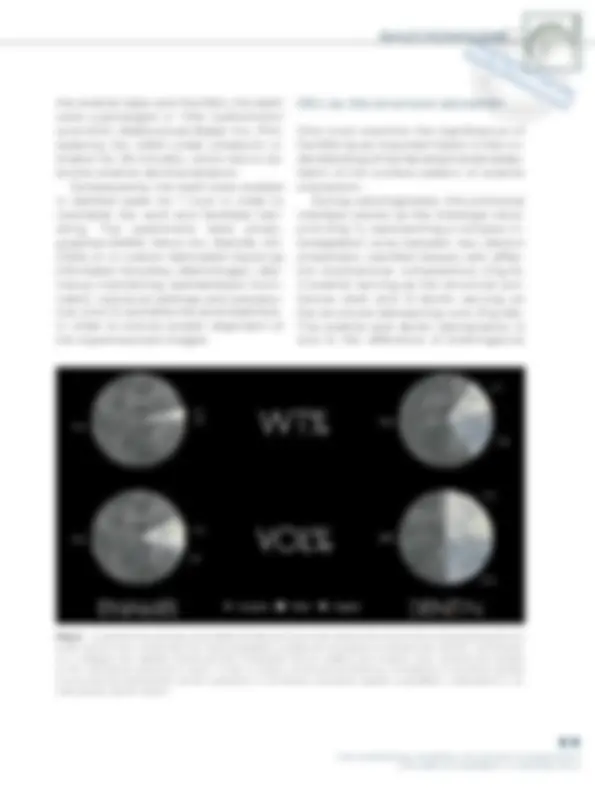
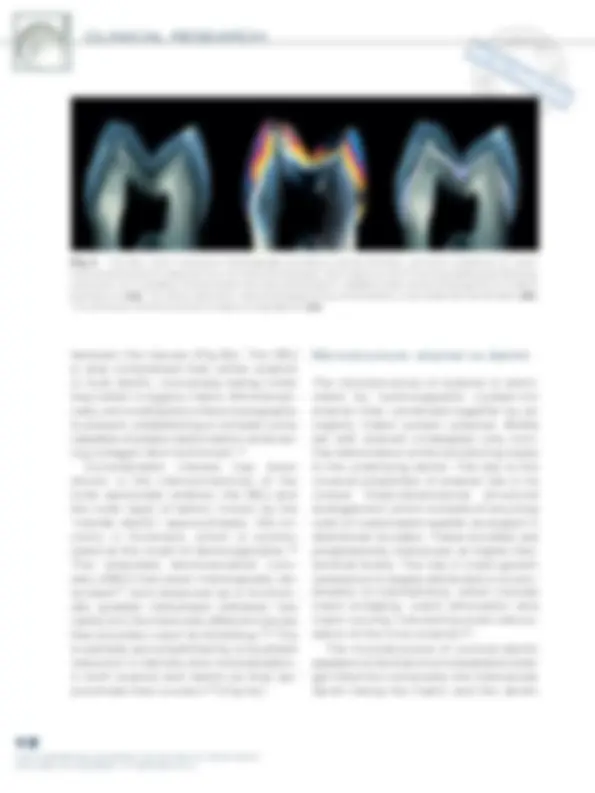
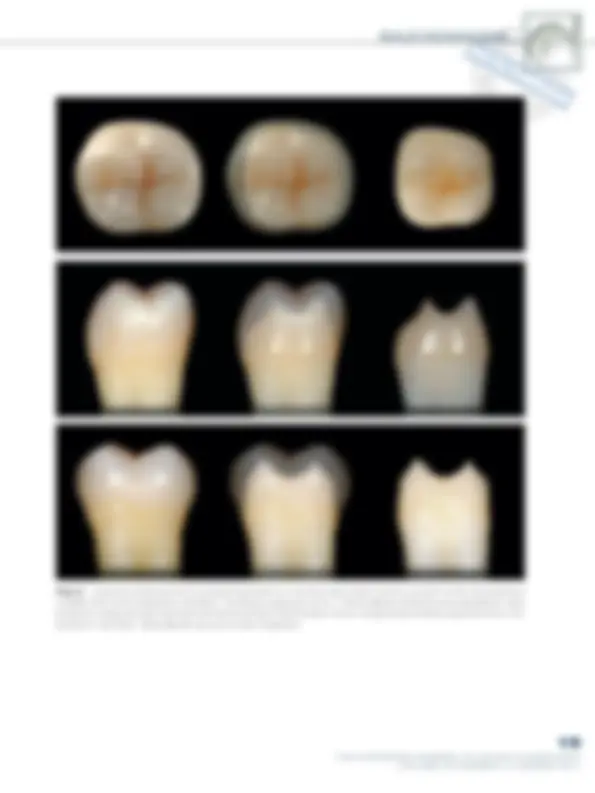
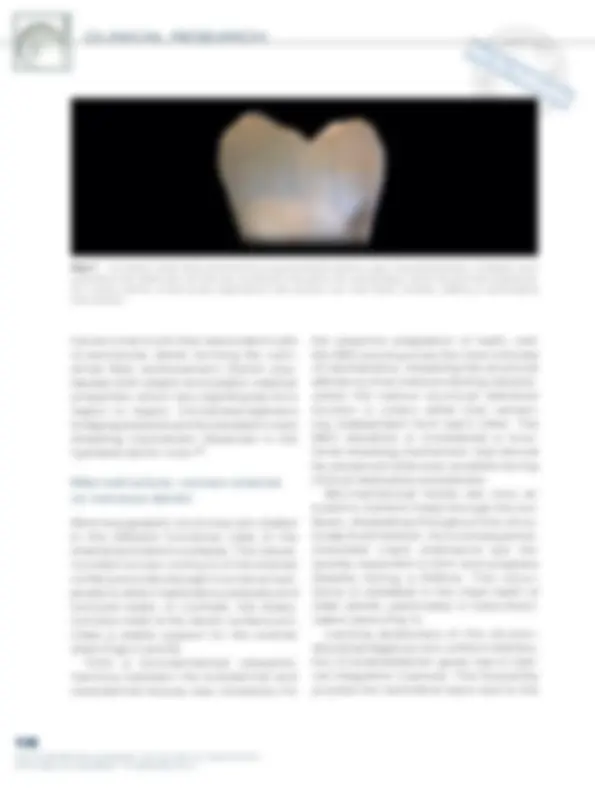
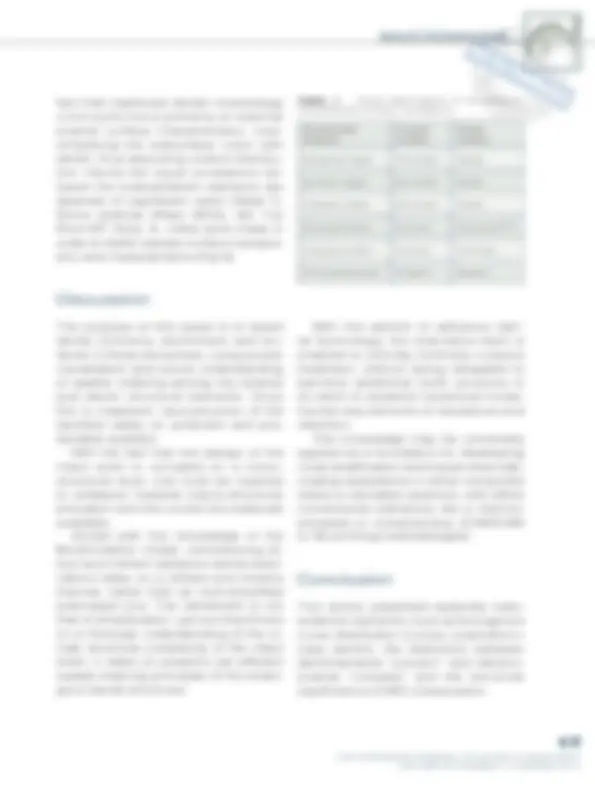



Estude fácil! Tem muito documento disponível na Docsity

Ganhe pontos ajudando outros esrudantes ou compre um plano Premium


Prepare-se para as provas
Estude fácil! Tem muito documento disponível na Docsity
Prepare-se para as provas com trabalhos de outros alunos como você, aqui na Docsity
Os melhores documentos à venda: Trabalhos de alunos formados
Prepare-se com as videoaulas e exercícios resolvidos criados a partir da grade da sua Universidade
Responda perguntas de provas passadas e avalie sua preparação.

Ganhe pontos para baixar
Ganhe pontos ajudando outros esrudantes ou compre um plano Premium
Comunidade
Peça ajuda à comunidade e tire suas dúvidas relacionadas ao estudo
Descubra as melhores universidades em seu país de acordo com os usuários da Docsity
Guias grátis
Baixe gratuitamente nossos guias de estudo, métodos para diminuir a ansiedade, dicas de TCC preparadas pelos professores da Docsity
Anatomia dentinária e sobreposição de esmalte
Tipologia: Trabalhos
1 / 13

Esta página não é visível na pré-visualização
Não perca as partes importantes!








b y N
THE EUROPEAN JOURNAL OF ESTHETIC DENTISTRY
Panaghiotis Bazos, DDS Emulation, Athens, Greece
Pascal Magne, DMD, MSc, PhD Don and Sybil Harrington Professor of Esthetic Dentistry, Herman Ostrow School of Dentistry, University of Southern California, Oral Health Center, Los Angeles, CA, USA
Correspondence to: Panaghiotis Bazos 33 Vasilissis Sophias Avenue 106 75 Athens, Greece Tel: +30 210 722 2329; e-mail: p_bazos@mac.com
b y N to rof
THE EUROPEAN JOURNAL OF ESTHETIC DENTISTRY VOLUME 6 • NUMBER 1 • SPRING 2011
A thorough understanding of the histo- anatomic structures and dynamic light interaction of the natural dentition pro- vides dental practitioners with the ulti- mate strategic advantage with regard to optical integration of the final resto- ration. The first part of this article will attempt to provide insight on the three- dimensional coronal configuration of natural teeth and on the utilization of this knowledge in the clinical and technical restorative approach.
The main goals for this article are to iden- tify and reveal previously unreported histo-anatomic interrelationships and to explain existing ones: the sigmoid curve distribution (convex enamel/concave dentin), the distinction between dentino- enamel “junction” (DEJ, visual interface) and dentinoenamel “complex” (DEC, functional interphase), and the struc- tural significance of DEC preservation.
(Eur J Esthet Dent 2011;6:8–19)
THE EUROPEAN JOURNAL OF ESTHETIC DENTISTRY VOLUME 6 • NUMBER 1 • SPRING 2011
b y N to rof
THE EUROPEAN JOURNAL OF ESTHETIC DENTISTRY
Fig 2 Enamel is the densely mineralized brittle yet hard outer shell of the tooth that envelopes/engulfs the softer dentin core; carbonate-rich hydroxyapatite crystals are arranged in enamel rods. Dentin, conversely, is a collagen-rich apatite reinforced bio-composite that is resilient yet tougher than enamel and similar at the nanostructural level to bone. It has a unique structural architecture consisting of dentinal tubules surrounded by peritubular dentin cylinders of randomly orientated apatite crystallites, embedded in an intertubular dentin matrix.
the enamel layer and the DEJ, the teeth were submerged in 10% hydrochloric acid (HCl, Mallinckrodt Baker Inc, Phil- lipsburg, NJ, USA) under ultrasonic vi- bration for 20 minutes, which led to se- lective enamel demineralization. Subsequently, the teeth were soaked in distilled water for 1 hour in order to neutralize the acid and facilitate han- dling. The specimens were photo- graphed (D200, Nikon Inc, Melville, NY, USA) on a custom fabricated tripod jig (XX-Halter, Novoflex, Memmingen, Ger- many) maintaining standardized illumi- nation, exposure settings and perspec- tive, prior to and after the acid treatment, in order to ensure proper alignment of the superimposed images.
One must examine the significance of the DEJ as an important factor in the un- derstanding of the developmental adap- tation of the surface pattern of enamel expression. During odontogenesis, this junctional interface serves as the histologic blue- print (Fig 1), representing a complex in- terdigitation zone between two distinct anisotropic calcified tissues with differ- ent biochemical compositions (Fig 2): i) enamel serving as the structural pro- tective shell and ii) dentin serving as the structural dampening core (Fig 3a). The enamel and dentin demarcation is due to the difference of birefringence
b y N to rof
THE EUROPEAN JOURNAL OF ESTHETIC DENTISTRY
between the tissues (Fig 3b). The DEJ is less mineralized than either enamel or bulk dentin, conversely being richer than either in organic matrix. Microscopi- cally, a bi-scalloped surface topography is present, establishing a complex zone capable of plastic deformation while be- ing collagen fibril-reinforced.^15 Considerable interest has been shown in the interconnectivity of the inner aprismatic enamel, the DEJ and the outer layer of dentin, known as the “mantle dentin” approximately 150 mi- crons in thickness, which is synthe- sized at the onset of dentinogenesis.^16 This extended dentinoenamel com- plex (DEC) has been histologically de- scribed 17 and observed as a function- ally graded interphase between two vastly bio-mechanically different tissues that provides crack tip shielding. 18 This is partially accomplished by a localized reduction in density and mineralization, in both enamel and dentin as they ap- proximate their junction 19 (Fig 3c).
The microstructure of enamel is domi- nated by hydroxyapatite crystal-rich enamel rods, cemented together by an organic matrix protein polymer. Brittle yet stiff, enamel undergoes only mini- mal deformation while transferring loads to the underlying dentin. The key to the unusual properties of enamel lies in its unique three-dimensional structural arrangement, which consists of very long rods of carbonated apatite arranged in directional bundles. These bundles are progressively interwoven at higher hier- archical levels. The rise in crack growth resistance is largely attributed to a com- bination of mechanisms, which include crack bridging, crack bifurcation and crack curving, induced by prism decus- sation of the inner enamel.^24 The microstructure of coronal dentin appears to be that of a mineralized colla- gen fiber bio-composite, the intertubular dentin being the matrix and the dentin
Fig 3 The DEJ, when examined histologically, provides a visual interface, yet when examined on a bio- mechanical level it is regarded as a functional interphase. Seen above is a 0.5 mm buccal/lingual histologi- cal section of a maxillary first premolar that was submerged in distilled water and photographed on a black background (a). The same specimen was photographed by transmissive cross-polarized illumination (b). The extended dentinoenamel complex is highlighted (c).
b y N to rof
THE EUROPEAN JOURNAL OF ESTHETIC DENTISTRY
Fig 5 Convex contours of the enamel surface are evident when viewed from the proximal surface, provid- ing a contrast to the sharp, concave relief of the dentin surface. Congruency of micro-expressions between enamel and dentin surface characteristics are depicted by the colored arrows. Maxillary first premolar depicted.
b y N to rof
THE EUROPEAN JOURNAL OF ESTHETIC DENTISTRY
Fig 6 A pronounced dentin concavity is present on the buccal surface at the junction of the cervical and middle third of the posterior dentition, forming a sigmoid curve. This localized enamel overexpression may present a selective bio-mechanical reinforcement mechanism to the compressive loads experienced in the posterior dentition. Mandibular second molar depicted.
b y N to rof
THE EUROPEAN JOURNAL OF ESTHETIC DENTISTRY
fact that traditional dental morphology curriculums focus primarily on external enamel surface characteristics, over- simplifying the subsurface union with dentin, thus assuming uniform distribu- tion. Hence the visual correlations be- tween the enamel/dentin elements are deemed of significant value (Table 1). Stone replicas (Pearl White, GC Fuji Rock EP, Alsip, IL, USA) were made in order to better assess surface topogra- phy and characteristics (Fig 8).
The purpose of this quest is to assist dental clinicians, technicians and stu- dents in these disciplines, using proper visualization and sound understanding of spatial ordering among the enamel and dentin structural elements. Once this is mastered, reconstruction of the dentition takes on proficient and pre- dictable qualities. With the fact that the design of the intact tooth is unrivaled on a micro- structural level, one must be inspired to endeavor towards macro-structural emulation with the current bio-materials available. Armed with this knowledge of the Bio-Emulation model, commencing di- rect and indirect adhesive dental resto- rations takes on a refined and intuitive manner, rather than an over-simplified automated one. The refinement is not that of simplification, yet one that thrives on a thorough understanding of the in- nate structural complexity of the intact tooth; it relies on powerful yet efficient spatial ordering principles of the analo- gous dental structures.
Morphologic features
Enamel surface
Dentin surface Marginal ridges Rounded Sharp
Buccal cusp/s Rounded Sharp
Lingual cusp/s Rounded Sharp
Buccal surface Convex Concave26,
Lingual surface Convex Concave
Occlusal fissures Present Absent
Table 1 Visual observations of the posterior enamel/dentin surface correlations.
With the advent of adhesive den- tal technology, the restorative team is enabled to provide minimally invasive treatment, without being obligated to sacrifice additional tooth structure in an effort to establish traditional funda- mental requirements of resistance and retention. This knowledge may be universally applied as a foundation for developing novel stratification techniques when fab- ricating restorations in either composite resins or etchable ceramics, with either conventional (refractory die or thermo- pressed) or contemporary (CAD/CAM or 3D printing) methodologies.
This article presented essential histo- anatomic elements, such as the sigmoid curve distribution (convex enamel/con- cave dentin), the distinction between dentinoenamel “junction” and dentino- enamel “complex” and the structural significance of DEC preservation.
b y N to rof
THE EUROPEAN JOURNAL OF ESTHETIC DENTISTRY
Fig 8 Stone replicas facilitate visual assessment and rumination of the variability between enamel and dentin surface topography. Thorn-like dentin tips are connected by sharp ridges, defining a constricted occlusal table when compared to that of the enamel counterpart. This cognitive paradigm shift may enable pathways towards improving current restorative stratification techniques and inspiring new bio-material innovations by structural and optical design. Maxillary first molar depicted.
Copyright of European Journal of Esthetic Dentistry is the property of Quintessence Publishing Company Inc.
and its content may not be copied or emailed to multiple sites or posted to a listserv without the copyright
holder's express written permission. However, users may print, download, or email articles for individual use.